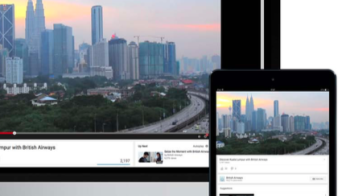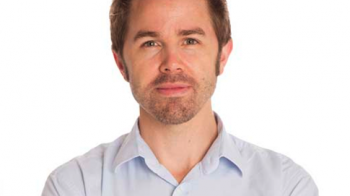How to build better digital video creative
Alex Burn
Despite the explosion in digital video advertising, most creative assets still tend to be made for TV. Alex Burn, Creative Director at Collective, explains why brands, agencies and publishers need to work together to make campaigns digital-first.
Next year, total digital ad spend will surpass TV for the first time. It’s expected to hit $77.37 billion in the US, taking 38.4% of the total ad spend, exceeding TV’s predicted $72.01 billion (35.8%), according to eMarketer. This is an advertising milestone and it would appear that good times are ahead. However, a barrier exists that means brands are not maximising the potential of this digital ad explosion.
The problem is one of creative content and format. In our recent Video Advertising Survey, just over half of respondents said that under a quarter of their online video campaigns featured made-for-digital creative. Meanwhile, recent research from Millward Brown found that 90% of online video is just repurposed TV material.
So what’s the issue here? Why develop new creative when you can use existing material that delivers the right key messages? This seems to make sense in theory, but the experience in practice is quite different. And it’s harming brand engagement and boosting ad blocking, particularly on mobile devices, on which video advertising grew by 94% in 2015, according to the IAB.
As Dane Hamer, Marketing Communications, Brand, Creative and Media at O2, pointed out recently at the Video Advertising Survey 2016 launch: “People are developing deeply personal relationships with their mobile device and it’s changing the way they consume media and video. As advertisers we interrupt this personal experience and we’re not really welcome. So we have to be much smarter in how we use this borrowed time with people on their phones. Data and technology can help us to serve consumers with something of value and connect with them on a level that satisfies their curiosity or desire for entertainment.”
This means taking a digital-first approach and tailoring creative to the digital medium on which it will be consumed while ensuring the content is relevant and engaging.
Providing the publisher perspective at the survey launch, Dominic Perkins, Commercial Development Director at Time Inc, said: “Some 55% of people who access our content are on mobile, so we simply have to deliver compatible relevant content for this format. We can put brands one-to-one with someone on a mobile, but if you whack a 30-second ad in front of them, you’ve lost that opportunity. Make it engaging and snackable, and it’s going to work much better.”
For Time Inc, there’s also the problem of format, with ad creative being supplied that’s too large in terms of file size, which increases latency – the speed with which a web page opens – damaging the user experience and encouraging ad blocking.
Also at the event was Frederica Turner, Head of Digital Investment at Maxus, who recommended brands to put the campaign objective and consumer experience first rather than the ad format or channel. “You should look at what you’re trying to achieve from your video,” she said. “Then when you’re building a creative strategy, speak to the creative agency and say we’re going to create a 30 second TV ad, but we’re also going to create some five-second content tailored to a digital audience. It’s much more cost-efficient to do it this way rather than going back later to re-craft creative, and more effective than running one style of video across all formats. TV is still fundamentally important to most advertisers, but we need to make the creative work across multiple platforms.”
Although admitting that it’s a big learning curve, Hamer explained that O2 has done this with great results. “We have seen some success with personalised video on a network campaign where we went after people who lived in a specific city and we knew they were getting over 99% 4G in their location,” he said. “So we served them with a short video saying they could get 99% 4G through O2. The results were fantastic – measured by View Through Rate, which was 96% for a skippable format.”
Time Inc, meanwhile, has worked successfully with Cadbury on a native campaign. “We created a lot of content, including how to make a chocolate chunky monkey. It was massively shared and highly consumable – people loved it!” said Perkins.
In the digital space there are opportunities to layer in engagement and interaction allowing the user to have a far deeper, more meaningful brand experience than can be achieved through traditional advertising. But this requires a different creative approach and needs to be addressed at the early planning stages of a campaign. Brands need to carefully consider how they can take the key story and messages, and make them more engaging for a digital audience.
The good news is that there are lots of creative possibilities; such as how could you make the user play with the video content? Maybe it could pause allowing the consumer to engage and make decisions, or unlock additional content. Perhaps consumers could be given two or more options to choose from, each of which takes them on a different brand journey suited to their specific preferences. This is the sort of experience that resonates in a deeper way and is possible in digital.
Ultimately, brands, agencies and publishers need to work together to take a digital-first approach to make the most of the huge opportunities that lie ahead online and on mobile.
Related content
Longer-form video is capturing attention on mobile screens across the globe
Learn moreCEDAR: Video Content Marketing
Learn moreVideo advertising: Assume nothing
Learn moreReal_Living: Full results - how devices compete for attention in the living room
Learn more
Fast forward to 2030 with Futurescape
An in-depth exploration of the attitudes, innovations and media shifts that will shape the years ahead and redefine how we advertise by the turn of the decade



